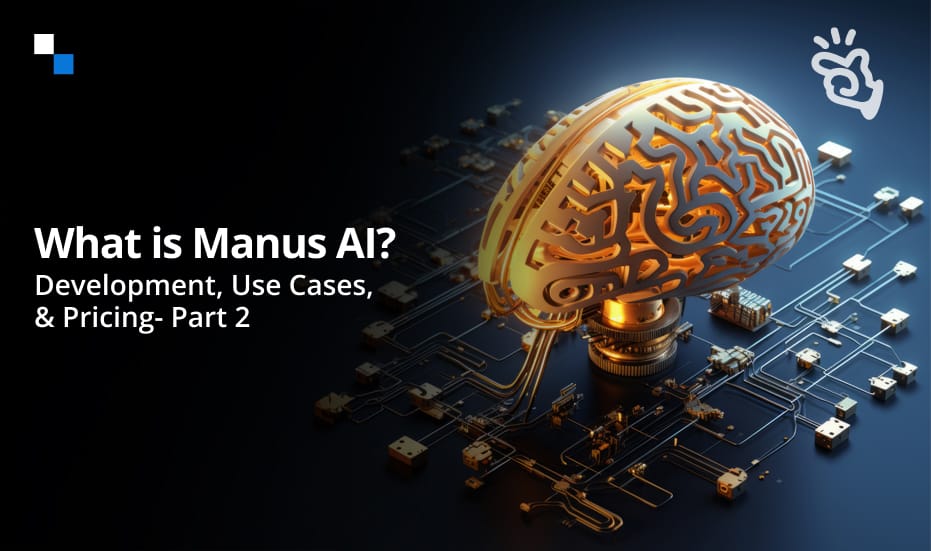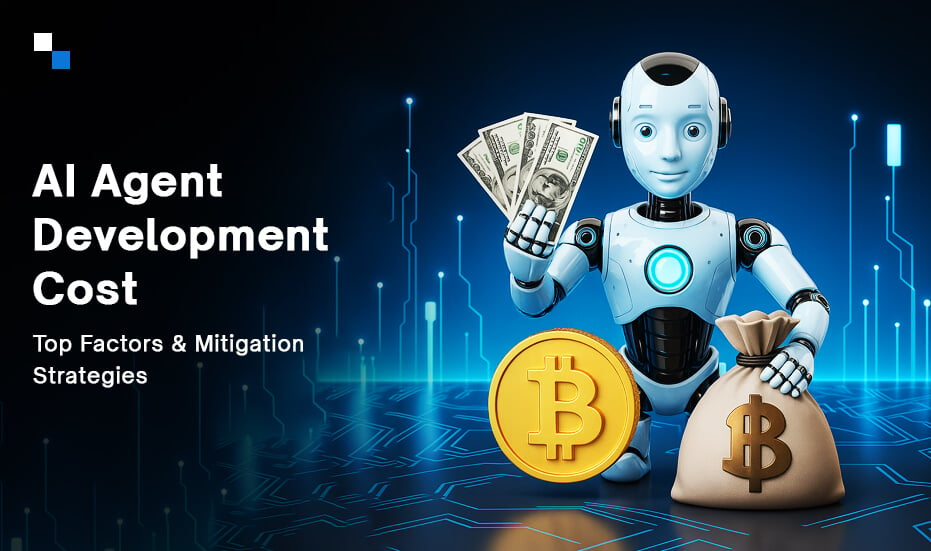
Smart Firms Are Moving Fast on Real Estate Tokenization in the UAE – Here Is Why
July 17, 2025
Evaluate Features, Cost & Security Tips: How to Pick the Best Cold Wallet for Slovenia?
July 17, 2025The current AI landscape is evolving beyond assistance-based models into platforms capable of autonomous operations. LLMs like GPT-4 offer impressive natural language capabilities, yet remain reliant on user prompts without the ability to act independently.
The next phase in AI focuses on the general-purpose AI agent, which is built to bridge the longstanding gap between decision frameworks and autonomous execution. Manus AI is a leading example in this space.
As one of the first truly autonomous general-purpose AI agents, Manus AI demonstrates advanced capabilities in both thinking and executing complex actions in a manner similar to human assistants.
This two part guide serves as a comprehensive resource for technology leaders looking to make hefty investments in AI agents like Manus AI. The first part focuses on key aspects, including:
What is Manus AI?
Manus AI is a general-purpose autonomous AI agent developed in 2025 by the Chinese startup Monica. Unlike traditional chatbots or language models that offer responses based solely on prompts, Manus AI agent can interpret intent, plan multi-step workflows, and execute them independently.
It leverages live web access, system-level integrations, and internal memory to manage tasks from beginning to end. Whether generating research reports, building websites, or managing operational workflows like recruitment or travel planning, it performs tasks autonomously while displaying real-time decision paths.
For organizations seeking AI agent development services that support real-time decision automation and task completion, Manus AI delivers a high degree of functionality and autonomy that few existing solutions can match.
Manus AI Benchmarks
Performance benchmarking plays a critical role in validating the effectiveness of AI systems, especially as enterprises explore reliable and scalable AI agent development platforms. Manus AI has demonstrated its technical maturity and functional capability through its performance on two of the most prominent benchmarks designed to evaluate general-purpose AI agents: GAIA and CUB.
GAIA

GAIA (General AI Assistant Benchmark) is specifically designed to evaluate the problem-solving capacity of AI agents in real-world scenarios, simulating practical use cases that require reasoning, planning, and execution. It includes tasks at three levels of difficulty, measuring an agent’s ability to understand context, interact with external environments, and deliver coherent outcomes without human supervision. Manus AI agent has achieved new state-of-the-art performance across all three difficulty levels of the GAIA benchmark. This achievement indicates a significant leap in general-purpose AI capability, showcasing Manus’s ability to operate as a truly autonomous system that thinks, adapts, and executes across diverse domains.
CUB

Manus AI has been evaluated on the CUB benchmark, which is known for its rigorous testing of computer and browser-use agents. CUb focuses on digital task completion involving web interfaces, file systems, and multi-step browser operations, areas where traditional AI agents often struggle due to the complexity of interactive environments. Manus AI achieved the best overall performance on the CUB benchmark when compared to all evaluated systems, demonstrating superior adaptability, interaction fluency, and execution reliability.
How Manus AI Works

SRC: https://arxiv.org/pdf/2505.02024
Manus AI is structured around a layered architecture that blends large-scale machine learning with an intelligent agent framework. At the core of this system is a transformer-based large language model trained on massive volumes of textual and multi-modal data. This foundational model powers the system’s general reasoning and language capabilities. Yet Manus AI extends well beyond a single-model setup by deploying a multi-agent structure, organizing its intelligence into purpose-built modules known as Manus AI Agents. The framework typically comprises three specialized agents that collaborate to complete tasks:
Planner Agent
This agent acts as the strategist. It receives a user’s prompt or objective and breaks it down into actionable sub-tasks. It formulates a logical sequence of actions required to reach the goal.
Execution Agent
This agent performs the actual operations. It follows the Planner’s roadmap by executing actions using tools or connecting with external systems. These may include browsers, databases, or runtime environments, depending on the nature of the sub-task.
Verification Agent
This agent monitors the process. It inspects the results produced by the Execution Agent, validating them for accuracy and relevance. If errors are detected, the agent can prompt a correction loop or trigger a new planning cycle.
Training Strategy
The intelligence behind each Manus AI Agent is powered by deep learning models and advanced machine learning strategies. Unlike systems limited to static training inputs or hardcoded rules, the Manus AI development approach enables it to learn from diverse task demonstrations. During training, developers likely applied reinforcement learning from human feedback, which helps the agent understand what constitutes a successful result. A built-in reward mechanism helps guide decision-making in unfamiliar settings.
A defining feature of this AI agent development platform is context-awareness. Manus AI doesn’t treat tasks as isolated commands. It keeps track of intermediate steps and evolving goals, adjusting strategies in real time. This internal memory allows it to work through multi-step problems while considering user-specific requirements or shifts in task flow. The language model generates each next action using sequence-based predictions, updating its course as new data appears.
For example, if asked to assess sales performance and recommend improvements, Manus will not only identify trends but also decide on the most relevant analysis techniques and deliver strategic suggestions similar to how a human analyst might approach the task.

Multi-Modal Learning and Task Flexibility
Manus AI Agent capabilities extend across multiple input types. During training, the system was exposed to multi-modal and multitask datasets. This included textual data, code snippets, images, and possibly audio signals. The AI agent development process incorporated data fusion models, enabling the platform to interpret and relate inputs across formats within a single task flow.
This means a Manus AI Agent can, within one process, read a document, analyze an image, execute a block of code, and generate combined insights. The architecture supports varied task types, from technical development to scientific interpretation, offering flexibility across industries.
Tool Interaction and Real-Time Execution
One of the strongest capabilities of Manus AI lies in its ability to interact with external tools. The Execution Agent is designed to call APIs or interface with third-party software. This is achieved through a system trained to understand when and how to trigger tool-based functions using natural language prompts.
For instance, when the task requires real-time stock data, the agent can activate a browsing tool to fetch current figures. When dealing with structured datasets, it can use database queries or spreadsheet functions to manipulate information.
This tool interaction framework extends Manus AI’s capabilities beyond what is encoded in the model’s neural weights. By incorporating real-time execution and external services into its workflow, the platform becomes far more versatile. Developers working on AI agent development can build on this tool-usage logic to create domain-specific applications.
Manus AI USPs: Prominent Features and Capabilities
Fully Autonomous Execution
Manus AI takes a goal-oriented approach to task management. Once a user provides a high-level objective, the system takes over end-to-end execution. It handles planning, tool selection, and implementation independently, whether it’s creating comprehensive reports, analyzing datasets, planning travel, or deploying digital assets.
Specialized Multi-Agent Framework
Rather than relying on a single model to manage everything, Manus AI distributes responsibilities across dedicated agents. These agents are structured for specific roles such as planning, researching, executing, verifying, or deploying and allows simultaneous processing and improved task coverage, especially in complex workflows.
Real-Time Tool Interaction
Manus AI connects with third-party systems and software in real-time. It can navigate browsers, complete forms, scrape information, edit spreadsheets, and interact with databases. This feature expands the platform’s usability from basic responses to practical action across live systems.
End-to-End Code Lifecycle Management
From writing scripts to deploying applications, Manus AI handles the complete software development cycle. It doesn’t just generate code but executes, tests, and launches it in a secure runtime environment. This enables functional deployments from a single prompt, and reduces dependency on manual testing or external DevOps.
Multi-Format Processing
The system handles varied data types like text, images, and code within a single session. This enables use cases like extracting insights from visual data, editing documents based on screenshots, or combining textual and coded inputs in real-time problem solving. It supports tasks across industries such as diagnostics, software engineering, and education.
Continuous Adaptation Through Use
Manus AI adjusts its behavior based on user interactions. Over time, it picks up on individual preferences, recurring task structures, and preferred output formats. This evolving memory allows it to tailor its future actions to the user’s style and needs without explicit instruction.
Asynchronous Task Handling
Once triggered, tasks continue to run in the background even if the user disconnects. This server-side processing approach improves responsiveness and lets users offload time-consuming processes without having to monitor or wait for completion.
Interrupt-Friendly Workflow
Users can interject while Manus AI is mid-task to clarify instructions or change priorities. The system incorporates these changes without restarting while allowing flexible task reconfiguration on the fly without disrupting overall progress.
Benchmark-Verified Capability
According to GAIA evaluations, Manus AI outperforms leading systems in executing real-world tasks autonomously. It scores highly on adaptability, autonomy, and multi-modal coordination, suggesting its practical performance surpasses many current-generation models.
Isolated Runtime for Secure Execution
Every task runs inside a dedicated Linux-based virtual environment. This sandbox structure separates each operation from external systems and creates a safe zone for executing code, handling sensitive data, or browsing the web.

Conclusion
From benchmark-topping performance on GAIA to its ability to independently plan, execute, and verify tasks, Manus AI demonstrates what’s possible when large language models are combined with purpose-driven architecture. This post explored the fundamentals of Manus AI i.e. what it is, how it works, its performance metrics, and the unique features that set it apart. Continue reading part two to explore the development process, compare Manus with other AI agent platforms, discover real-world use cases, review pricing insights, and much more. In addition to that, get in touch with the AI agent development experts at Antier to know more about Manus AI.




